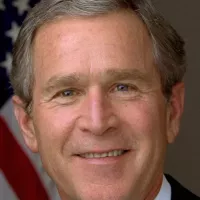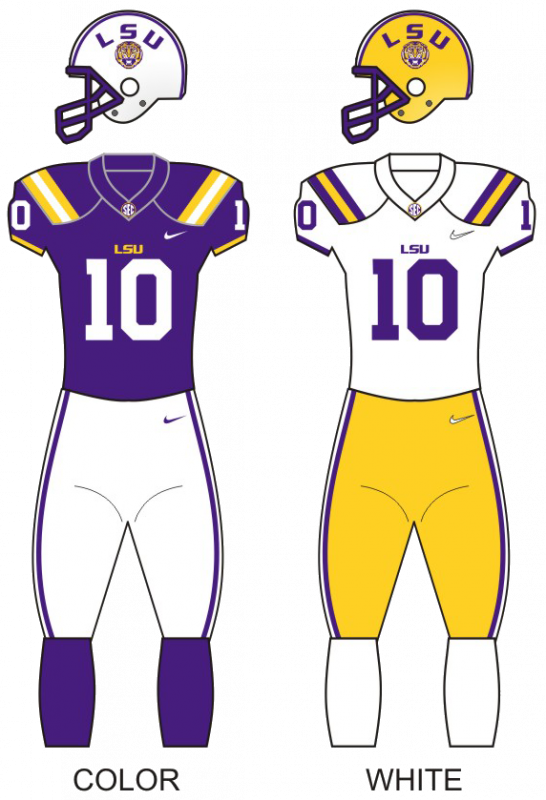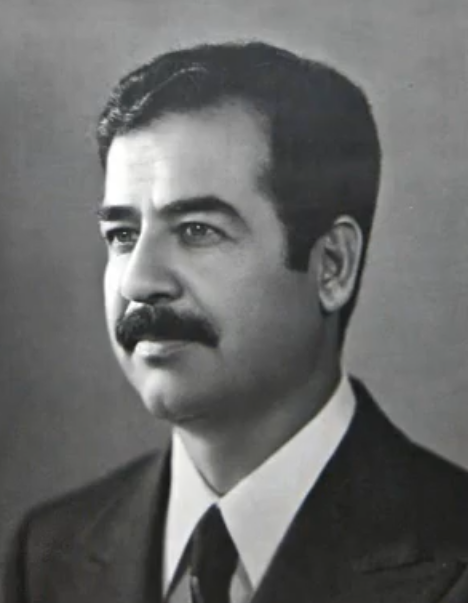How Saddam Hussein built a successful career. Explore key moments that defined the journey.
Saddam Hussein was the fifth president of Iraq from 1979 to 2003, following the American invasion. He was a key member of the Arab Socialist Ba'ath Party and advocated for Ba'athism, blending Arab nationalism and socialism. His political ideology is known as Saddamism. He previously served as Vice President (1968-1979) and Prime Minister (1979-1991, 1994-2003). His rule ended with his overthrow and subsequent capture.
1957: Joined the Ba'ath Party
In 1957, Saddam Hussein joined the revolutionary Ba'ath Party, marking the beginning of his political career.
1957: Dropped out of Law School to Join Ba'ath Party
In 1957, at the age of 20, Saddam Hussein dropped out of an Iraqi law school to join the revolutionary pan-Arab Ba'ath Party.
1963: Saddam commemorated for involvement in the 1963 revolution
Saddam Hussein received numerous medals from the Iraqi state commemorating his involvement or leadership during various events, including the 1963 revolution.
September 1966: Challenge to Syrian Domination
In September 1966, Saddam Hussein initiated a challenge to Syrian domination of the Ba'ath Party, leading to the party's formal split into two factions.
July 1968: Participation in a Bloodless Coup
In July 1968, Saddam Hussein participated in a bloodless coup led by Ahmed Hassan al-Bakr that overthrew Abdul Rahman Arif, marking a significant event in his rise to power.
1968: Vice Presidency
In 1968, Saddam Hussein became the vice president of Iraq, a position he held until 1979.
1968: Saddam commemorated for involvement in the 1968 revolution
Saddam Hussein received numerous medals from the Iraqi state commemorating his involvement or leadership during various events, including the 1968 revolution.
1969: Moving Force Behind the Party
By 1969, Saddam Hussein had become the moving force behind the Ba'ath Party, despite al-Bakr being the older and more prestigious leader.
1970: Saddam commemorated for involvement in peace in 1970
Saddam Hussein received numerous medals from the Iraqi state commemorating his involvement or leadership during various events, including peace in 1970.
June 1972: Seizure of International Oil Interests
In June 1972, Saddam Hussein oversaw the seizure of international oil interests in Iraq, which at the time dominated the country's oil sector.
1972: Treaty of Friendship and Cooperation with the Soviet Union
In 1972, Saddam Hussein signed a 15-year Treaty of Friendship and Cooperation with the Soviet Union.
1973: Shift to Pro-Arab Policy in France
Following the oil crisis of 1973, France shifted to a more pro-Arab policy and was rewarded by Saddam Hussein with closer ties.
1973: Energy Crisis and Rising Oil Prices
In 1973, the world oil prices rose dramatically as a result of the 1973 energy crisis. This led to skyrocketing revenues enabling Saddam to expand his agenda.
1973: Saddam commemorated for involvement in the 1973 Yom Kippur War
Saddam Hussein received numerous medals from the Iraqi state commemorating his involvement or leadership during various events, including the 1973 Yom Kippur War with Israel.
December 1974: Visit to Spain
In December 1974, Saddam Hussein visited Spain at the invitation of Francisco Franco, and toured Madrid, Granada, Córdoba, and Toledo.
1974: Agricultural Development Expenditures Doubled
In 1974, the Ba'athist government doubled expenditures for agricultural development.
March 1975: Signing of the Algiers Agreement
On March 6, 1975, Iran and Iraq signed the Algiers Agreement, mediated by Algerian President Houari Boumediene, to settle border disputes and improve bilateral relations. Under the accord, Iraq was granted sovereignty over the eastern bank of the Shatt al-Arab waterway, while Iran retained control over the western bank. Following the agreement, Iraq and Iran restored full diplomatic relations and exchanged ambassadors.
1975: Agricultural Development Expenditures Doubled
In 1975, the Ba'athist government doubled expenditures for agricultural development.
1976: Promotion to General in the Iraqi Armed Forces
In 1976, Saddam Hussein rose to the position of general in the Iraqi armed forces, rapidly becoming the strongman of the government.
1977: Saddam Hussein on faith and atheism
In 1977, Saddam Hussein stated that "our Party does not take a neutral stance between faith and atheism; it is always on the side of faith."
1978: Arab League Summit in Baghdad
In 1978, Baghdad hosted an Arab League summit that condemned and ostracized Egypt for accepting the Camp David Accords, with Saddam Hussein leading the Arab opposition.
July 1979: Assumption of the Presidency
On July 16, 1979, Saddam Hussein forced the ailing al-Bakr to resign and formally assumed the presidency of Iraq, securing his grip on power.
1979: De Facto Leader of Iraq
By 1979, Saddam Hussein was the de facto leader of Iraq, taking on an increasingly prominent role as the face of the government both internally and externally as al-Bakr became unable to execute his duties.
1979: Presidency and Premiership
In 1979, Saddam Hussein became the fifth president of Iraq, serving until 2003, and also served as prime minister from 1979 to 1991.
1979: Formal Ascension to Power
In 1979, following al-Bakr's resignation, Saddam Hussein formally took power, solidifying his leadership in Iraq.
1980: Saddam receives key to Detroit
In 1980, Saddam Hussein received a ceremonial key to the city of Detroit after donating nearly half a million dollars to a local church.
1980: Women Granted Full Suffrage
In 1980, Saddam Hussein's government granted women full suffrage and the right to run for office.
1982: Soviet Union Begins Supplying Iraq
By 1982, the Soviet Union began supplying Iraq with military aid, marking a shift from its initial refusal based on neutrality in the conflict with Iran.
1982: US Support
In 1982, the United States government supplied Iraq with satellite photos showing Iranian deployments, which may have played a crucial role in blocking the Iranian invasion of Iraq.
February 1986: Blame for Defeat
In February 1986, Saddam's government blamed the Iraqi defeat in the First Battle of al-Faw on "misinformation from the U.S."
1986: Increased Soviet Support
From 1986 to 1988, in the final years of the Iran-Iraq war, the Soviet Union actively supported Iraq, reversing its initial stance of neutrality and providing military aid.
July 1988: Iran Accepts Resolution 598
On 20 July 1988, Iran accepted Resolution 598 of the United Nations Security Council. This acceptance was largely influenced by diminished morale, economic hardship, and the success of Iraq's Tawakalna ala Allah Operations, paving the way for a ceasefire in the Iran-Iraq War.
August 1988: Ceasefire Accepted
On 20 August 1988, Iran accepted Resolution 598, signaling a ceasefire, primarily due to a combination of factors including poor morale, economic collapse, and the success of Iraq's Tawakalna ala Allah Operations. This brought the Iran-Iraq war to an end after years of hostilities.
1988: Soviet Support for Iraq
By 1988, in the final years of the Iran-Iraq war (1986–1988), the Soviet Union actively supported Iraq, reversing its initial stance of neutrality and providing military aid.
August 1990: Invasion of Kuwait
On 2 August 1990, Saddam Hussein invaded Kuwait, initially claiming to assist Kuwaiti revolutionaries, triggering an international crisis. By 28 August, Kuwait was formally declared the 19th Governorate of Iraq.
January 1991: Start of Operation Desert Storm
On 16 January 1991, a U.S.-led coalition launched round-the-clock missile and aerial attacks on Iraq. This operation was backed by the Security Council and aimed to liberate Kuwait.
February 1991: Ejection from Kuwait
In February 1991, a ground force consisting largely of U.S. and British armored and infantry divisions ejected Saddam's army from Kuwait, occupying the southern portion of Iraq as far as the Euphrates.
1991: Saddam awarded Order of the Mother of Battles
In 1991, Saddam Hussein received the Order of the Mother of Battles for his role in the Gulf War against Kuwait and the United States.
1991: Saddam awarded the Order of the Two Rivers
In 1991, Saddam Hussein was awarded the Order of the Two Rivers, Iraq's highest honor, for his "historic role" and "noble services to Iraq". The award was given during his 54th birthday.
1991: End of First Premiership
In 1991, Saddam Hussein's first term as prime minister of Iraq came to an end.
1993: Greater emphasis on Islam
From 1993 through the Faith Campaign, Saddam's regime placed a greater emphasis on Islam in all sectors of Iraqi life.
1994: Return to Premiership
In 1994, Saddam Hussein began his second term as the prime minister of Iraq, a position he held until 2003.
1995: Saddam's referendum results
In the 1995 referendum, Saddam Hussein reportedly received 99.96% of the votes with a 99.47% turnout.
2000: Support for Palestinians and Establishment of Jerusalem Army
In 2000, following the outbreak of the Second Intifada, Saddam Hussein openly expressed solidarity with the Palestinians. He also established the Jerusalem Army, a volunteer force, and provided financial assistance to the families of Palestinian victims and militants, directing around 20% of Iraq's oil revenue to Palestinians.
2002: Saddam's referendum results
In the 2002 referendum, Saddam Hussein officially achieved 100% of approval votes and 100% turnout, with all 11,445,638 eligible voters reportedly casting a "Yes" vote.
Mentioned in this timeline

Donald John Trump is an American politician media personality and...

George W Bush the rd U S President - is...
The United States of America is a federal republic located...
CBS Broadcasting Inc CBS is a prominent American commercial broadcast...
The Union of Soviet Socialist Republics USSR existed from to...
CNN Cable News Network is a multinational news organization founded...
Trending

2 months ago Travis Scott's Epic Johannesburg Performance: Fans Brave Weather for Unforgettable Show

6 months ago Immanuel Iheanacho, a five-star OT, narrows down top schools, including LSU Tigers.
17 days ago Dylan Raiola Transfer Rumors Surface; Brother Decommits from Nebraska, Future Uncertain

24 days ago Bitwise Launches XRP ETF Amidst Market Activity; XRP Staking Explored.
2 months ago Kansas Jayhawks face UCF Knights: Sorsby's performance crucial in Big 12 matchup.
Jaylen Warren is a professional American football running back currently playing for the Pittsburgh Steelers in the NFL He had...
Popular

Candace Owens is an American conservative political commentator and author...

Ilhan Omar is an American politician currently serving as the...

XXXTentacion born Jahseh Dwayne Ricardo Onfroy was a controversial yet...

Frederick Christ Trump Sr - was an American real estate...

Oprah Winfrey an American talk show host television producer actress...

Tom Cotton is an American politician and Army veteran currently...
